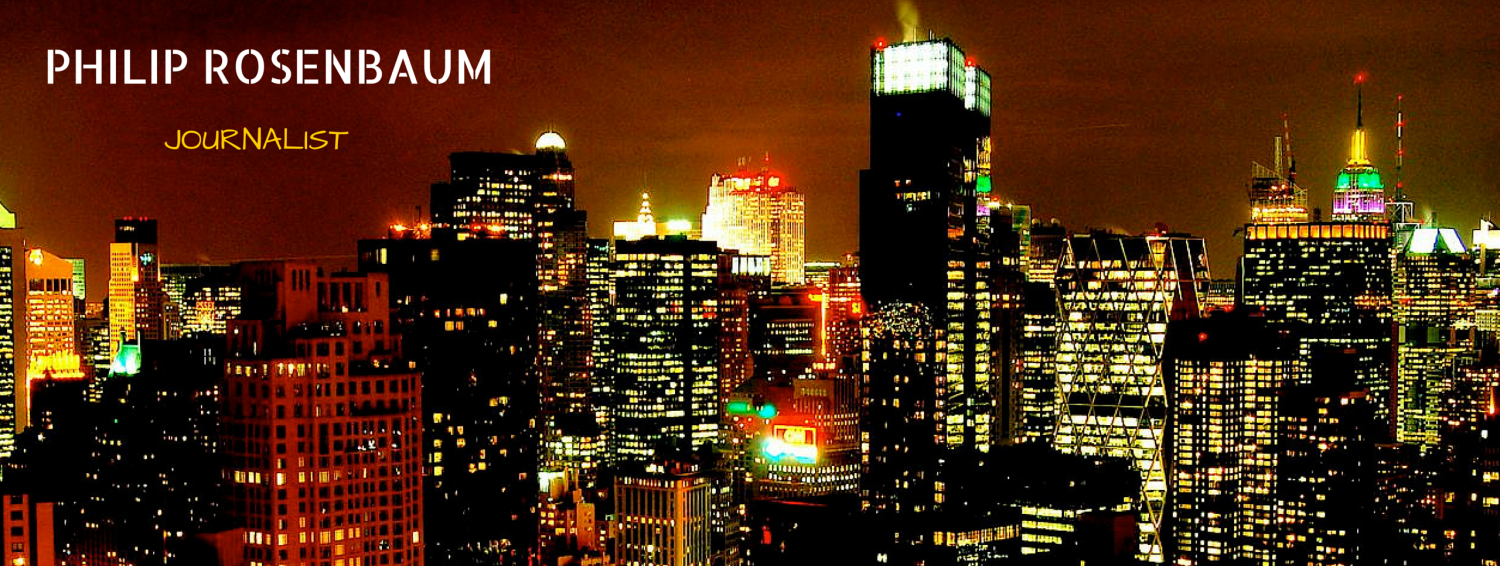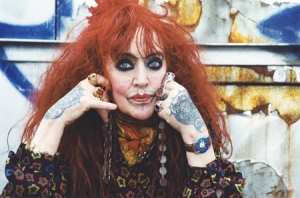By Philip I. Rosenbaum
Associated Press Writer
Artist Vali Myers sets the floor with newspaper and serves melted cheese on pita bread, then throws a scrap to the mice behind the stove.
“It’ll be a holocaust,” Myers said of the extermination awaiting the mice a few days before she was scheduled to leave her room at The Chelsea Hotel.
Isn’t she afraid of the rodents? “Of course not,” she says. “It’s people you sometimes have to worry about.”
Myers says she likes people and loves meeting them.
“I know thousands of people. I always forget their names.”
Does she keep a list of their names?
“No. I’m bad with names.”
How does she remember their numbers?
“What numbers?”
As she talks, Myers breaks out the lipstick as often as a chainsmoker lights up.
White makeup coats her most visible canvas, her face. Fiery orange billows of hair frame the creation and above her lip rests a thin mustache-like design, which she tattooed.
The hotel room – appearing more like the set for a piece of performance art than a place to live – is a trip inside her mind. Like a child playing “camp,” the 62-year-old Myers lives, eats and sleeps on the pillow-and-blanket-covered floor. On the front door, Italy’s Madonna del Arco is honored with a picture and strings of colored lights.
Home to generations of artists, musicians and poets, The Chelsea is Myers’ base when she’s away from her reclusive valley in Il Porto, Italy, south of Positano.
This time, she says, the return to Vali’s valley celebrates a victory in her decades-long battle to keep the land out of developers’ hands.
The World Wildlife Foundation has stepped in to help her preserve the area, its animals and plants, Myers said in a recent interview.
“The lovely thing is no one knows how long that victory lasts,” Myers said. “Victory is just something that’s here today, gone tomorrow – like spit in your eye.”
Not that she relishes tranquillity.
“I don’t have this feeling that if you have a battle everything should be peaceful and quiet,” she said. “I can’t imagine anything worse than peace and quiet.”
Thousand-foot cliffs surround Myers’ tiny pavilion-style home, a nobleman’s guest house about two centuries ago. She rents the valley from the state. It’s not her “thing” to want things, she explains. Most of her money goes to feeding the goats, dogs and other animals.
Myers’ Italian companion, Johnny – a painter-poet who meandered into the valley more than two decades ago when he was 19 years old – takes care of the place.
“It’s wild,” she says of the valley. “I love what’s wild. Everywhere you go it’s hard to find something that’s untouched.”
The Australian-born artist compares her restless spirit with the wanderings of the nomadic natives of her homeland.
“Some Australians get more or less pregnant with the Aborigine spirit. No place is really like home. You’re always on a walkabout even within yourself.”
That theme also guides Myers in her work. Not a great thinker by her own assertion, Myers thinks as little as possible when she’s drawing. Instead, errant emotion and instinct lead her penstrokes.
“If I was in prison I could work,” Myers said. “I have no sense of time. If I think of when I was a little kid it feels immediate.”
In 1949, the 19-year-old artist went to Paris, spending days and nights in cafes with her new friends, mostly youths displaced by World War II.
Back then, she refused to sell her art. Later, she met writer George Plimpton, who urged her to part with some of it.
“Vali, you’ve got to sell your work, you’ve got to eat,” she recalls Plimpton telling her. By 1970, her devotion to the valley brought her to New York to sell work to pay for the upkeep of the land and animals.
Over the years, she has drawn while shut in a cage set inside her small home in the valley.
In his Paris Review in 1975, Plimpton wrote: “She is not a prisoner. The cage is to her what a burrow would be to an animal, an iron lacework protection against the outside. She speaks of it as a ribcage protecting the heart.”
She draws mainly detailed self-portraits, which sometimes take her up to two years to complete.
Even her body is a billboard advertising her love of animals. Tattoos cover her hands and feet. Her left hand, “the heart side,” is devoted to Foxy, the pet fox she had for 14 years.
“And this one’s got the name of a favorite red goat that died – Bishli – and some of my dogs,” she says during a tour of her tattoos.
People are a bit like animals on their good days, Myers says, but she holds animals to a higher standard.
“It pisses me off because they always say, ‘Oh, people behave like animals,’ but animals are never stupid and kill unnecessarily like people do. I’ve seen animals kill but they’re clean about it.”
Also simple yet abstruse is her reason for returning to Italy.
“Like a wild creature, it’s time to go.”

